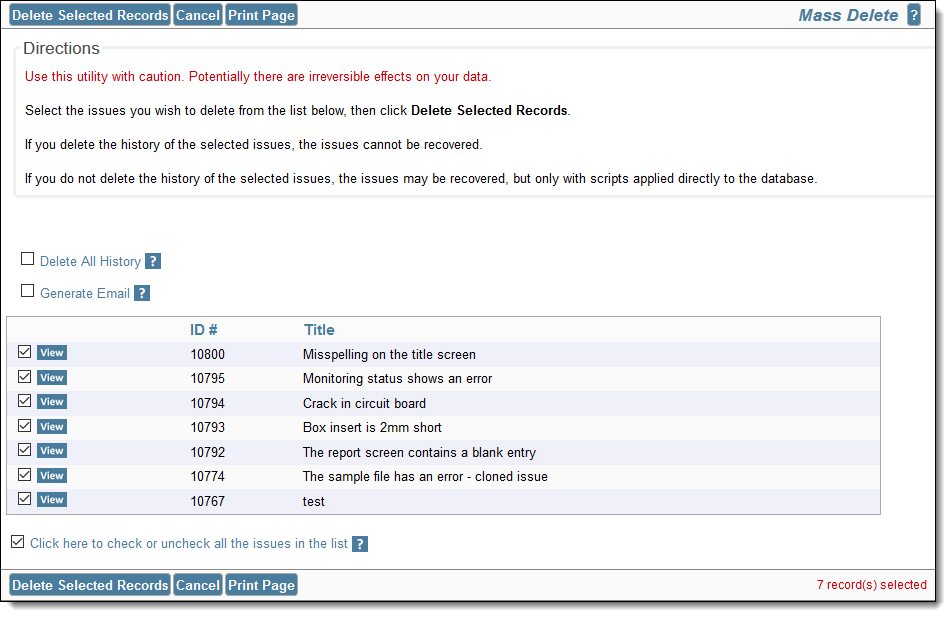Mass Deleting of Issues
Click for administrative information
This utility allows any number of issues to be deleted from the ExtraView database and must be used with extreme caution. Deleted issues cannot be recovered, and you may need to restore your database from a backup to undo the effects of using this utility.
The primary use for this feature is to allow organizations who have record retention policies to be in compliance with these policied. For example some organizations may have policy that says that records more than 7 years old should be deleted.
Your site administrator may not have provided permission to your user role to run this utility. If you do have permission, a button labeled Mass Delete Issues will appear on the output of Quicklists and Column reports. This button invokes the utility and shows a screen similar to the following:

The same set of issues that were seen on the Quicklist or Column report are displayed, each with a checkbox allowing it to be selected or deselected for deletion. Note the checkbox at the bottom of the list at allows you to select or deselect all the issues with a single click of your mouse.
If you do not check the Delete All History box, the history of the issues will be retained within the database, and it may be possible, with the use of database scripts to recover the deleted issues. If you check this box, the issues cannot be recovered and are permanently deleted.
When you have made the appropriate selections for deletion, click the Delete Selected Records button on the menubar. You will be asked to confirm that it is OK to proceed. There will be a progress screen displayed. Once the deletion is complete, there will be a summary of the deletions made.
